|
Having trouble viewing this email? View it as a Web page.

|
|
|
Editor: Kelly Sprute January 12, 2022
Making a Difference
 Onions, courtesy of Adobe Stock.
Destructive Onion Virus Evolving, Spreading
Iris yellow spot virus is continuing to pose a danger to onion crops by evolving and spreading, according to research from Washington State University (WSU) virologists. Named for its original host plant, Iris yellow spot has caused significant damage to onion crops around the world.
Infection weakens the seed-bearing stems, causing them to lodge, or fall over, effectively destroying the next generation of seeds. The virus also reduces photosynthetic activity, ultimately shrinking the onion bulb.
WSU professor Hanu Pappu and his research colleagues set out to understand the diversity of the virus, as well as its evolution and possible reasons for its global spread, using a rapid molecular test, a sort of genetic fingerprinting. The study provided insight into the speed with which this virus is evolving and spreading. Funded in part by USDA-National Institute of Food and Agriculture’s Specialty Crop Research Initiative. For more information, read the WSU Insider article.
|
|

USDA Invests $9M to Expand Reach and Increase Adoption of Climate-Smart Practices
USDA announced today a $9 million investment in new Cooperative Extension and USDA Climate Hubs partnerships to bolster climate research and connect and share climate-smart solutions directly with the agricultural community. “The Cooperative Extension system and the USDA Climate Hubs have unmatched capacity to reach agricultural, Tribal and underserved communities, as well as educators and students, and our nation’s farmers directly,” said Agriculture Secretary Tom Vilsack. “This partnership will strengthen climate research efforts and accelerate the development, adoption and application of science-based, climate-smart practices that benefit everyone.” For more information, read the NIFA press release.
Agriculture Secretary Tom Vilsack, courtesy of the USDA.
|
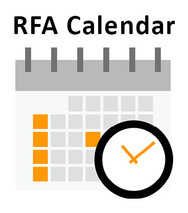
RFA Application Deadline Changes
Some NIFA Requests for Applications (RFA) releases are delayed. Please follow the NIFA RFA Calendar for the most current targeted posting dates and updated deadlines. Please sign up to be notified of application package posting on Grants.gov or you can sign up for all NIFA Funding Announcements on our website. Once they are posted, you can find the RFA link and the deadline NIFA’s RFA Calendar.
RFA Calendar graphic.
|
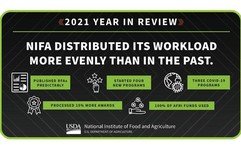
Celebrating NIFA’s 2021 Accomplishments
Despite the challenges and changes faced during 2021, the USDA National Institute of Food and Agriculture (NIFA) saw success in propelling U.S. agriculture forward. Celebrate the New Year with NIFA as we highlight our 2021 achievements. For more information, read the NIFA blog article.
NIFA’s 2021 accomplishments graphic, courtesy of NIFA.
|

National Milk Day: January 11
National Milk Day is January 11, which observes the first time – 1878 – milk was delivered to homes inside sterilized glass bottles sealed with waxed paper. According to the USDA Economic Research Service, in 2020 more than 9 million dairy cows produced 223.2 billion pounds of milk in the United States. On National Milk Day, we’re highlighting some of the Land-grant Universities conducing dairy research with support from the National Institute of Food and Agriculture. For more information, read the NIFA blog article.
National Milk Day graphic, courtesy of NIFA.
|

National Fresh Squeezed Juice Week: January 9-15
During National Fresh Squeezed Juice Week, we’re highlighting partners that are conducing critical citrus research and outreach with support from the National Institute of Food and Agriculture. Penn State University and USDA scientists have used cutting-edge CRISPR/Cas technology to develop a diagnostic test that could enable early diagnosis of Huanglongbing or citrus greening, a serious disease that threatens worldwide citrus production, which is valued at roughly $17 billion from the sale of fresh fruit and juices. For more information, read the NIFA blog article.
Fresh Squeezed Juice Week graphic, courtesy of NIFA.
|

A History of Innovation in the Dairy Industry
Consumer preferences and demand has been a guiding force in dairy innovations for decades and remains so going into the future. USDA’s Rod Bain talks with Dairy Management Incorporated Paul Ziemninsky as he offers a short history on the changes to the dairy industry and future areas of growth. For more information, listen to this USDA broadcast.
Stacked cheeses and fork, courtesy of Adobe Stock.
|
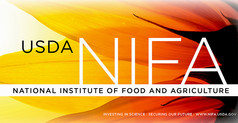
NIFA Career Opportunities
We are hiring! The National Institute of Food and Agriculture (NIFA) recruits a diverse group of talented, creative, motivated professionals who are invested in shaping the future of food and agricultural science. We offer a variety of benefits and services to our employees that focus on work-life balance, career enhancement, and health and well-being. NIFA has career opportunities in a variety of scientific disciplines covering engineering, food science, forestry, education, animal and crop sciences, and many other agriculture-related disciplines. NIFA job openings are listed on USAJobs. Current NIFA job openings are for Kansas City, Missouri, or location negotiable after selection.
Associate Director for Operations (SES-00)
Closing Date: January 20.
View the job announcement.
|

Choline During Pregnancy Impacts Children’s Sustained Attention
Seven-year-old children performed better on a challenging task requiring sustained attention if their mothers consumed twice the recommended amount of choline during their pregnancy, a new Cornell study has found. The study suggests that the recommended choline intake for expectant mothers does not fully meet the needs of the fetal brain. Choline, found in egg yolks, lean red meat, fish, poultry, legumes, nuts, and cruciferous vegetables, is absent from most prenatal vitamins, and more than 90% of expectant mothers consume less than the recommended amount. The study, “Prenatal Choline Supplementation Improves Child Sustained Attention: A Seven-Year Follow-Up of a Randomized Controlled Feeding Trial,” published in the Journal of the Federation of American Societies for Experimental Biology. This research was funded by USDA’s National Institute of Food and Agriculture, and the Balchem Corporation. For more information, read this Cornell Chronicle article.
Pregnant young woman, courtesy of Adobe Stock.
|

4-H Weather and Climate Youth Learning Lab
Weather and climate influence every aspect of life. The goal of this project is to study the world of weather and climate, and specifically how they are influenced by natural processes and human activities. In this Learning Lab, participants are guided as they explore data, patterns, extremes, and forecasts or predictions to better understand weather and climate connections. For more information, read the Montana State University article.
Weather collage, courtesy of the Montana State University.
|
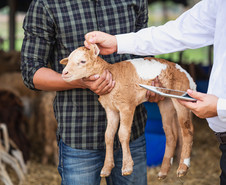
Prairie View A&M University Awarded Grant to Train Veterinary Students
Texas A&M University veterinary students will receive further veterinary training at Prairie View A&M University’s International Goat Research Center, thanks to a USDA-National Institute of Food and Agriculture grant. The $165,683 grant is for an educational project, training for veterinary students in goat medicine and production. The funds are part of the $2.8 million awarded to programs that support rural veterinary programs through NIFA’s Veterinary Services Grant Program. For more information, Prairie View A&M University article.
Veterinarian performing a check-up on a baby goat, courtesy of Adobe Stock.
|

National Extension Climate Initiative
The National Extension Climate Initiative serves to link climate change-related education and research across Extension program areas and associations. There are four ways you can get involved. Go to the National Extension Climate Initiative for more information.
|

Women and Minorities in Science, Technology, Engineering and Mathematics Fields Grant Program
NIFA staff for the Women and Minorities in Science, Technology, Engineering and Mathematics Fields Grant Program (WAMS) will host a webinar on January 26, at 3 p.m.ET. WAMS supports research and extension projects that increase participation by rural women and minorities in science, technology, engineering, and mathematics fields. Register online or for more information, go to the WAMS webinar announcement.
Webinar graphic, courtesy of Adobe Stock.
|
Save the Date
Prioritizing Nutrition Security: Cooperative Extension's Framework for Health Equity and Well-Being
Webinar, January 25, at 3 p.m. ET. For more information, go to the Prioritizing Nutrition Security webinar announcement.
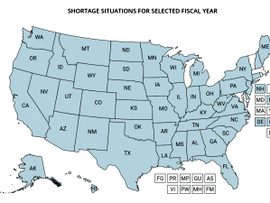
NIFA Invest $7.5M in America’s Food Animal Veterinarians Serving in High-priority Veterinary Shortage Situations
NIFA recently announced the fiscal year 2021 Veterinary Medicine Loan Repayment Program (VMLRP) awards. VMLRP provides up to $75,000 in loan repayment to help eligible veterinarians offset a significant portion of the debt incurred in pursuit of their veterinary medicine degrees in return for their service in certain high-priority veterinary shortage situations. Food animal veterinarians are critical to maintaining a healthy, secure, and safe food supply. Today, there is a critical shortage of food animal veterinarians in both private and public practice, particularly in rural communities, in the United States and insular areas. Food animal producers rely on veterinarians with expertise in animal medicine and surgery as well as advanced training in herd health, diagnostic medicine, epidemiology, public health, and food safety. Funding is authorized by the National Veterinary Medical Services Act. In 2021, NIFA made 78 awards totaling $7,558,227 in loan repayments in 26 states. Go to the VMLRP shortage area map for more information.
VMLRP shortage area map graphic, courtesy of NIFA.
|

|
|
|
NIFA’s mission is to invest in and advance agricultural research, education, and extension that solve societal challenges. NIFA’s investments in transformative science directly support the long-term prosperity and global preeminence of U.S. agriculture. Keep informed about NIFA, USDA, our land-grant and non-land-grant university partners, and stakeholders with the NIFA Update. Read past issues online, sign up for email updates or follow us on Twitter @USDA_NIFA, #NIFAImpacts or LinkedIn @usda-nifa.
If you wish to submit a news item or information, send an email to NIFAUpdate.
USDA is an equal opportunity lender, provider, and employer.
|
|
|
|